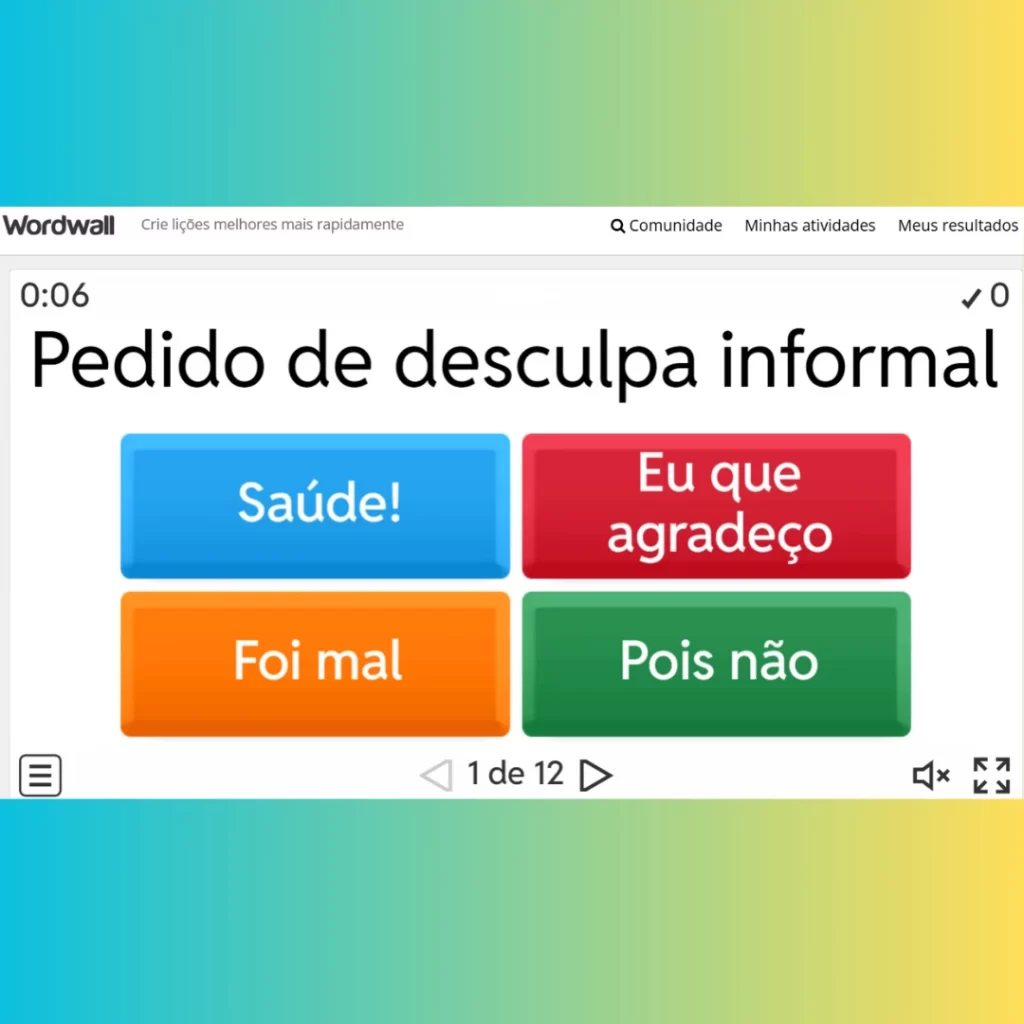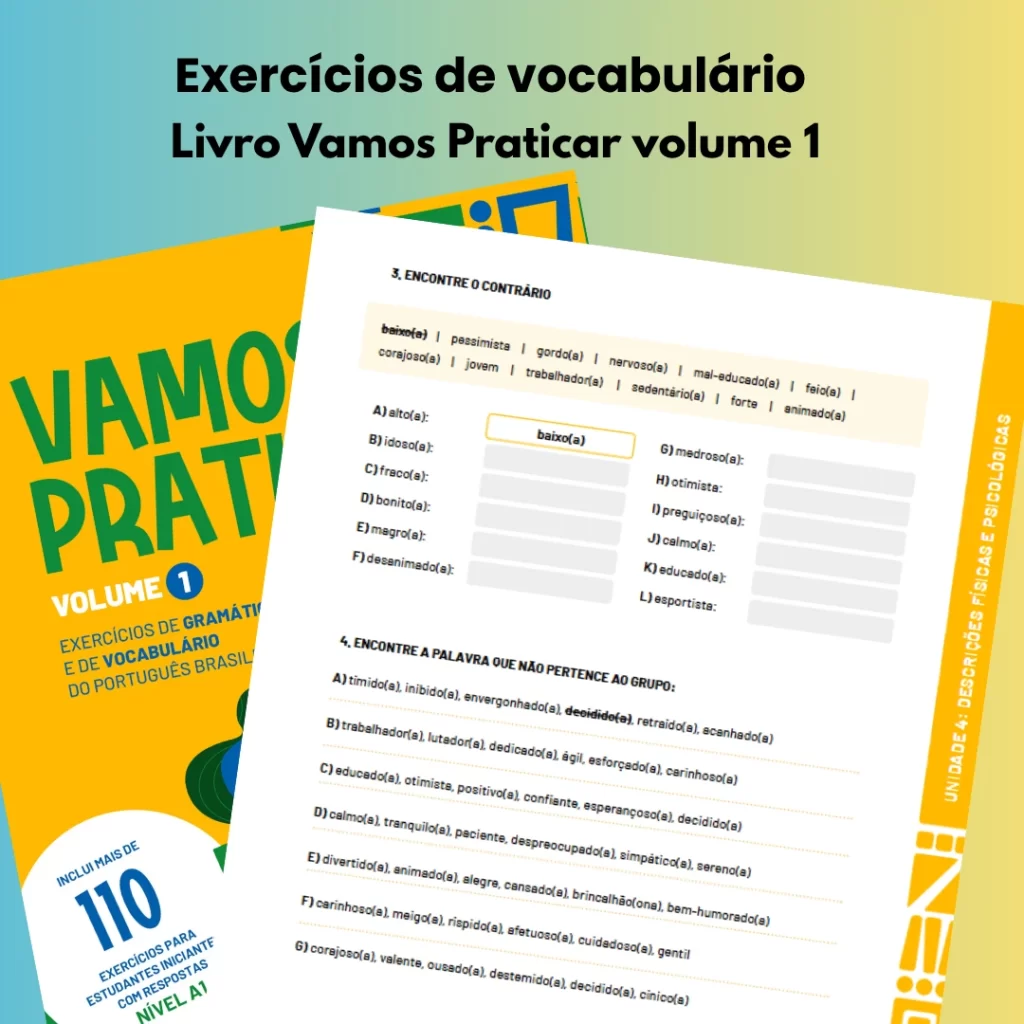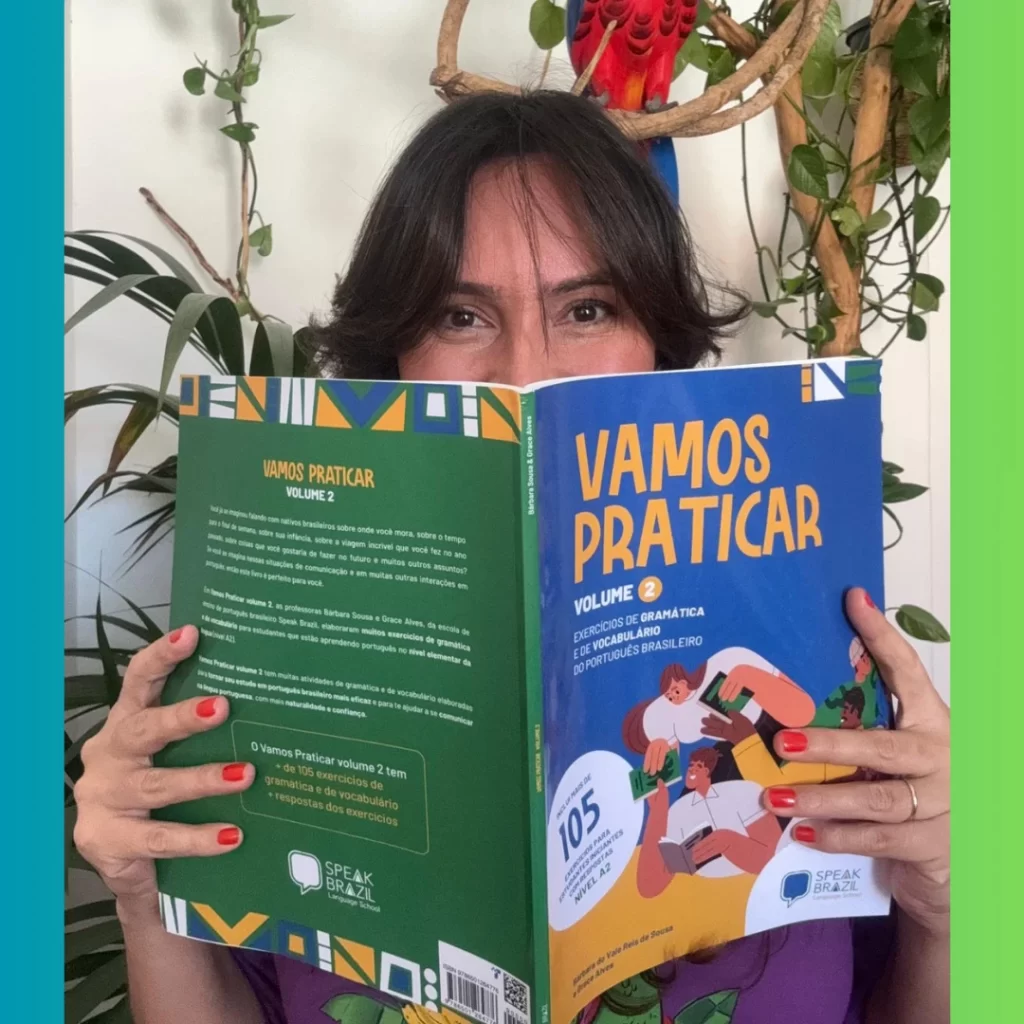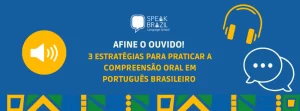Os Minutinhos Finais: Estratégias para Encerrar a Aula com Leveza | The Final Minutes: Strategies for Ending Class
Compartilho minha experiência com professoras(es) de português como língua estrangeira. (I share my experience with teachers of Portuguese as a foreign language.)
Uma das surpresas que eram recorrentes, eram os momentos finais das minhas aulas. Quando restavam cerca de 10 a 5 minutinhos para a aula terminar.
(One of the recurring surprises was the final moments of my classes. When there were about 10 to 5 minutes left before the class ended.)
Seja porque eu concluí antes do tempo da aula que eu havia preparado, seja porque eu senti que era preciso interromper a minha aula planejada, pois estava complexo, cansativo, difícil para o(a) estudante, ou seja por qualquer outro motivo que me fizesse ter cerca de 10 minutinhos restantes da aula para fazer algo produtivo e interessante com esse tempo.
(Whether it was because I finished before the end of the lesson I had prepared, or because I felt it was necessary to interrupt my planned lesson because it was complex, tiring, or difficult for the student, or for any other reason that left me with about 10 minutes of the lesson remaining to do something productive and interesting with that time.)
Quando esses momentos aconteciam e acontecem, sempre vou escolher como plano B um material leve, descontraído, não muito difícil e ao mesmo tempo prazeroso para o(a) estudante fazer!
(When these moments happened and happen, I will always choose as a plan B something light, relaxed, not very difficult, and at the same time enjoyable for the student to do!)
Porque, eu penso que minhas aulas de PLE devem sempre priorizar a leveza, a descontração, a positividade, a qualidade e a eficácia. Por isso, para mim, finalizar uma aula com um conteúdo de qualidade, que contribua para o aprendizado do(a) estudante de maneira suave e com um dos jeitinhos brasileiros, isto é: alegre e com muitas rizadas, se tornou a minha maneira preferida!
(Because I believe that my PLE classes should always prioritise lightness, relaxation, positivity, quality and effectiveness. That’s why, for me, ending a class with quality content that contributes to the student’s learning in a gentle way and with a Brazilian touch, that is: cheerful and with lots of laughter, has become my favourite way!)
Aproveitando os Últimos Minutos com Estudantes dos Níveis A1 e A2 | Using the Last Few Minutes with Students at Levels A1 and A2
Neste artigo, eu quero compartilhar com você o que eu tenho usado atualmente com meus estudantes iniciantes, estudantes que estão nos níveis A1 e A2 do português como língua estrangeira.
(In this article, I want to share with you what I am currently using with my beginner students, students who are at levels A1 and A2 of Portuguese as a foreign language.)
Geralmente, no final das minhas aulas de nível iniciante, quando sobram alguns minutinhos para finalizar a aula, eu sempre aproveito para trazer uma atividade que não precisa de muitas explicações para o estudante entender o que é para fazer. Assim, asseguro uma comunicação mais simples e tento continuar usando o máximo do português na aula, sem me desviar para um grande auxílio de uma língua ponte, como o inglês, por exemplo.
(Generally, at the end of my beginner-level classes, when there are a few minutes left to finish the lesson, I always take the opportunity to bring in an activity that does not require much explanation for the student to understand what to do. This way, I ensure simpler communication and try to continue using Portuguese as much as possible in class, without resorting to a bridge language, such as English, for example.)
Para introduzir essas atividades, eu uso vocabulários bem convidativos e positivos, como: “Agora vamos fazer um jogo!”; “Vamos aproveitar o finalzinho da nossa aula para praticar um pouquinho dos nossos queridos verbos irregulares no presente, ebaaa!!!”; “Vamos fazer uma última atividade, ela vai ser legal!”; “Ah, maravilha! Vamos parar por aqui e agora quero fazer uma outra coisa na nossa aula!”…
(To introduce these activities, I use very inviting and positive vocabulary, such as: ‘Now let’s play a game!’; ‘Let’s use the last few minutes of our class to practise a little bit of our beloved irregular verbs in the present tense, yay!!!’; ‘Let’s do one last activity, it’ll be fun!’; “Oh, wonderful! Let’s stop here and now I want to do something else in our class!”…)
Acredito que trabalhar com a psicologia positiva ao longo da nossa prática educacional é extremamente importante para o aprendizado, para a motivação, para chamar a atenção, para ressaltar os momentos relevantes e para contribuir com o lado positivo de aprender uma nova língua, neste caso, o português falado por nós brasileiros(as)!
(I believe that working with positive psychology throughout our educational practice is extremely important for learning, for motivation, for attracting attention, for highlighting relevant moments, and for contributing to the positive side of learning a new language, in this case, the Portuguese spoken by us Brazilians!)
Após convidar o(a) estudante para o momento final da aula e motivá-lo(a) a finalizar a nossa aula com gostinho de quero mais, eu proponho fazer uma atividade que eu considero que o(a) aluno(a) vá conseguir fazer, que já estudamos previamente e ao mesmo tempo que eu sei que ele(ela) não tem ainda total confiança sobre o tema.
(After inviting the student to the final moment of the lesson and motivating them to end our lesson with a taste of wanting more, I propose an activity that I believe the student will be able to do, which we have already studied previously, and at the same time, I know that they do not yet have complete confidence in the subject.)
Dessa forma, meu desejo é que a atividade referente aos 10 minutinhos restantes da aula não seja
(Therefore, my wish is that the activity for the remaining 10 minutes of the lesson is not)
- ➡️ um assunto totalmente novo, que possa ser difícil para o conhecimento prévio da língua que o(a) aluno(a) já adquiriu ou (a completely new subject, which may be difficult for the student’s prior knowledge of the language, or)
- ➡️ que a atividade aborde um tema que ele já domina e é muito fácil para fazer. (that the activity addresses a topic that they have already mastered and is very easy to do.)
Em outras palavras, a atividade que eu tenho gostado muito de aplicar nesses momentos da aula de português, na minha opinião, são as que eu encontro um equilíbrio entre o que o(a) estudante já tem conhecimento prévio e o que o(a) estudante ainda possa reforçar.
(In other words, the activities that I have really enjoyed using at these moments in Portuguese class, in my opinion, are those where I find a balance between what the student already knows and what the student can still reinforce.)
👉 Por exemplo: se eu sei que o(a) estudante está aprendendo os verbos irregulares no presente do indicativo, que já sabe uma parte e outras ainda não memorizou. Dessa forma vou optar por introduzir uma atividade com verbos irregulares no presente do indicativo, para que o aluno, possa responder o que ele já memorizou e ao mesmo tempo possa repetir os verbos que ainda não tem total confiança.
(For example: if I know that the student is learning irregular verbs in the present tense, and that they already know some of them but have not yet memorised others, I will choose to introduce an activity with irregular verbs in the present tense so that the student can answer what they have already memorised and at the same time repeat the verbs they are not yet completely confident with.)
👉 Outro exemplo: se o estudante já aprendeu ou tem conhecimento prévio de vocabulário sobre a alimentação. Neste caso, eu tento trazer uma atividade com o vocabulário que eu imagino ou sei que ele sabe e também outros vocabulários bem específicos da culinária brasileira que talvez seja uma novidade. Acho que uma atividade como esta dá mais abertura para a gente mostrar a imagem do alimento ou da comida, talvez dê para iniciar uma conversa e criar uma oportunidade para que o estudante sinta, de maneira expontânea, vontade de se expressar sobre um determinado assunto.
(Another example: if the student has already learned or has prior knowledge of vocabulary related to food. In this case, I try to bring in an activity with vocabulary that I imagine or know they know, as well as other vocabulary that is very specific to Brazilian cuisine, which may be new to them. I think an activity like this gives us more opportunity to show images of food, perhaps start a conversation and create an opportunity for the student to spontaneously feel like expressing themselves on a particular subject.)
Minhas Atividades Preferidas para os Minutinhos Finais | My Favourite Activities for the Final Minutes
Minhas atividades de final de aula preferidas atualmente, para estudantes que estão no nível inciante do português como língua estrangeira, são:
(My favourite end-of-class activities at present, for students who are at the beginner level of Portuguese as a foreign language, are:)
1.Fazer um jogo breve e simplificado sobre um tema de conhecimento prévio do(a) estudante. Aqui, tento usar vários materiais como cartas com imagens; exercícios e jogos em plataformas online, como WordWall, Kahoot, e jogos e desafios que eu e Grace criamos nos meus livros Vamos Praticar: volume 1 e 2.
(Create a short, simplified game based on a topic the student is already familiar with. Here, I try to use various materials such as picture cards; exercises and games on online platforms such as WordWall and Kahoot; and games and challenges that Grace and I created in my books Vamos Praticar: volumes 1 and 2.)
2. Outro exemplo: se o estudante já aprendeu ou tem conhecimento prévio de vocabulário sobre a alimentação. Neste caso, eu tento trazer uma atividade com o vocabulário que eu imagino ou sei que ele sabe e também outros vocabulários bem específicos da culinária brasileira que talvez seja uma novidade. Acho que uma atividade como esta dá mais abertura para a gente mostrar a imagem do alimento ou da comida, talvez dê para iniciar uma conversa e criar uma oportunidade para que o estudante sinta, de maneira expontânea, vontade de se expressar sobre um determinado assunto.
(Give them a consolidation exercise with a challenging twist! Here, I once again use the exercises we produced for the Vamos Praticar books. I never imagined I would use them so much and that I would get such positive feedback, but the fact is, when we made the Vamos Praticar books, we wanted to create activities that weren’t just mechanical and repetitive. We also wanted to create activities with diverse and creative formats, hoping to contribute to PLE learning in a light and relaxed way. That’s why I believe these activities fit well. In addition to our books, I also use exercises I created on platforms such as WordWall or Kahoot, for example, as reinforcement activities.)
3. Começar uma atividade com palavras para completar, com palavras para excluir, com frases para combinar e completar o sentido, com palavras para escolher a melhor opção e depois matar uma charada, com imagens para descrever, com músicas para ouvir e encontrar as imagens que fazem sentido com a história da música, entre outras atividades… que necessitam de um tempo maior do que o tempo que me resta no final da aula. Aqui eu tenho o objetivo de ajudar o(a) aluno(a) a entender a dinâmica da atividade e descomplicá-la. Nesses contextos, eu gosto de usar as atividades dos livros Vamos Praticar ou atividades que eu já tenho em formato Word com a intensão de aproveitar para sugerir uma atividade extra, para o estudante praticar além da nossa aula, como um tarefa de “casa”.
(Starting an activity with words to fill in, words to exclude, phrases to match and complete the meaning, words to choose the best option and then solve a riddle, images to describe, songs to listen to and find images that make sense with the story of the song, among other activities… which require more time than I have left at the end of the class. Here, my goal is to help the student understand the dynamics of the activity and make it less complicated. In these contexts, I like to use activities from the Vamos Praticar books or activities that I already have in Word format with the intention of suggesting an extra activity for the student to practise outside of class, as a “homework” assignment.)
Durante algum tempo da minha jornada como professora de PLE, esses minutinhos finais da aula foram para mim motivo de ansiedade, sempre pensando: “o que eu faço se o conteúdo não for até o final?”; “o que eu dou para meu estudante que já está cansado de se concentrar no conteúdo estudado durante a aula?”, “qual plano B para o final da aula se acontece um imprevisto?”.
(For some time during my journey as a PLE teacher, those final minutes of class were a source of anxiety for me, always thinking: ‘What do I do if I don’t finish the content?’; ‘What do I give my students who are already tired of concentrating on the content studied during class?’; ‘What is my plan B for the end of class if something unexpected happens?’)
E ao longo do tempo, ao tentar criar várias estratégias e planos B. Eu acredito que consegui ter algumas ideias e práticas didáticas do que fazer e o que geralmente funciona bem.Tem sido uma experiência muito positiva!
(And over time, by trying to come up with various strategies and backup plans, I believe I have managed to come up with some ideas and teaching practices about what to do and what generally works well. It has been a very positive experience!)
E imagino que você, professor(a), já faça algumas das atividades que mencionei ou todas, ou vai mais além. Se você se sentir à vontade, gostaria que você compartilhasse com a gente a sua experiência nos comentários desse artigo, o que funciona maravilhosamente bem nos minutinhos finais da sua aula?
(And I imagine that you, teacher, already do some or all of the activities I mentioned, or even go further. If you feel comfortable, I would like you to share your experience with us in the comments section of this article. What works wonderfully well in the final minutes of your class?)
Se você se interessar em saber mais sobre nossos livros de português como língua estrangeira, Vamos Praticar volume 1 e 2 – dois livros com muitos exercícios de gramática e de vocabulário para os níveis iniciantes (A1 e A2) – é só clicar no link a seguir:
(If you are interested in learning more about our Portuguese as a foreign language books, Vamos Praticar volumes 1 and 2 — two books with many grammar and vocabulary exercises for beginner levels (A1 and A2) — just click on the following link:)
Ah, e nestas duas primeiras semanas de outubro, eu e Grace (autoras desses livros) não poderíamos deixar de preparar um miminho para as(os) professoras(es)!
(Oh, and in these first two weeks of October, Grace (the authors of these books) and I couldn’t help but prepare a little treat for the teachers!)
Nesse mês tão lindo de outubro que também é dedicado às educadoras e aos educadores! Nossos livros Vamos Praticar em formato PDF estão com um desconto especial! Serão somente duas semanas, esta e a próxima deste mês!
(In this beautiful month of October, which is also dedicated to educators! Our Vamos Praticar books in PDF format are available at a special discount! It will only be for two weeks, this week and next week!)
Cupom de desconto (Discount voucher): AMORPELOENSINO












